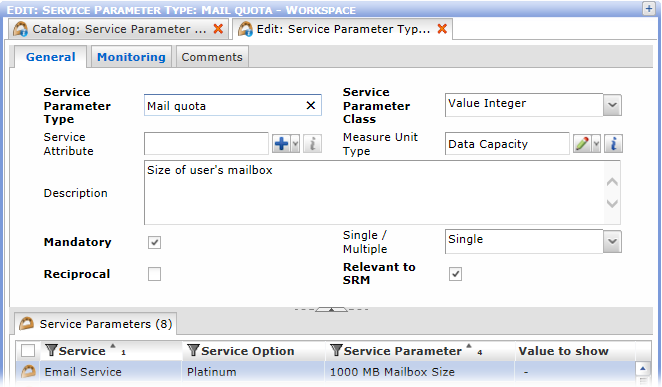Service Parameter Type
To create a service parameter, a corresponding suitable service parameter type must exist. Service Parameter Types are used to classify Service Parameters. Examples of Service Parameter Types would be 'Availability', 'Response Time', 'Bandwidth', 'Latency', 'Jitter', etc.
The creation of service parameter types belongs to the area of Service Metamodel and will be most likely done by the Service Architect.
Creating a Service Parameter Type
- Open the 'Service Parameter Types' catalog in the 'Service Metamodel' section of the 'Service Level Manager' sidebar.
- Call the 'Create' context menu action. The 'New: Service Parameter Type' editor opens.

- Service Parameter Type - Specify a name of the new service parameter.
- Service Parameter Class - Corresponds to the type of data, e.g. 'Value Integer' is used for amounts, 'Value Float Percentage' for service parameters of percentage values, 'Float Unit' is used for values with a measure unit etc.
- Service Attribute - ITIL classification of service parameters
- Measure Unit Type - Type of unit used with the value, e.g. 'Bandwidth', 'Data Capacity', 'Time', etc.
- Description - Textual field for parameter type description
- Mandatory - 'Mandatory' means that if a service parameter of this type is used in a service, it needs to be specified (cannot be left empty).
- Single / Multiple - Multiple means that the parameter can be substituted with another similar service parameter.
- Reciprocal - Determines how parameter values are considered. If 'Reciprocal' is unchecked, then more is considered better (e.g. bandwidth), if 'Reciprocal' is checked, then more is considered worse (e.g. number of dropouts).
- Relevant to SRM - If checked, then service parameters of this type will be used when SRM product types are created for services.
- Specify the service parameter type attributes and save the object.